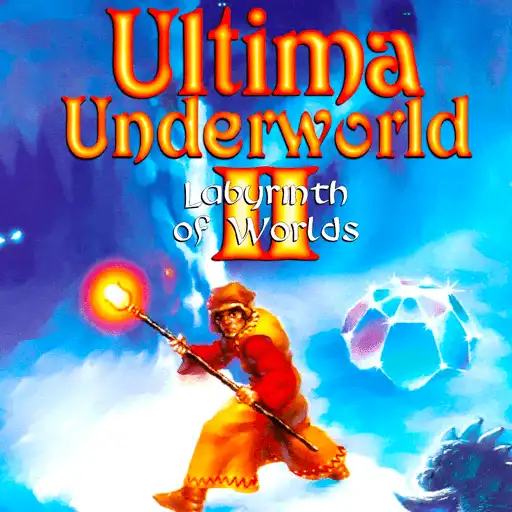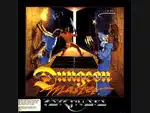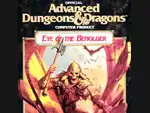
Ultima Underworld 2 Labyrinth of Worlds: A Deep Dive into its Complex Gameplay and Design
Ultima Underworld II: Labyrinth of Worlds is a classic in the world of role-playing games. As the sequel to the original Ultima Underworld, this 1993 release expands on the immersive experience players loved while introducing new mechanics and settings.
The game's richly detailed environments and innovative gameplay set a standard for future RPGs, making it a pivotal title in gaming history.
In Labyrinth of Worlds, players take on the role of the Avatar, navigating through diverse dimensions filled with unique challenges and quests. The intricate design and technical advancements in this installment contributed significantly to the gaming landscape, influencing countless titles that followed.
The blend of storytelling and gameplay mechanics offers both nostalgia for seasoned players and a captivating experience for newcomers.
Exploring its legacy sheds light on how Ultima Underworld II not only shaped the genre but also impacted narrative-driven game design. Its contribution goes beyond just entertainment; it ushered in new ways to engage players in a virtual world.
Key Takeaways
- Ultima Underworld II is a key sequel that enhanced RPG gameplay.
- The game features unique dimensions and engaging quests.
- Its influence is seen in many modern narrative-driven games.
Overview of Ultima Underworld II
Ultima Underworld II: Labyrinth of Worlds is a deep and immersive role-playing game. It features gameplay that allows players to explore multiple dimensions, complete quests, and interact with a variety of characters and environments.
Gameplay Mechanics and Features
In this game, players control a character from a first-person perspective. The mouse is used for navigation and interaction.
The game offers dungeon-like settings across eight parallel worlds, encouraging exploration and problem-solving.
Key Features:
- Free Movement: Players can move freely in a 3D space, enhancing immersion.
- Variety of Worlds: Each world has unique quests and inhabitants.
- Inventory System: Players manage items and equipment, affecting gameplay choices.
Combat involves strategic choices, with players needing to use spells, weapons, and items wisely. Quests vary in difficulty, demanding different skills and approaches.
Plot and Storyline
The narrative begins with the Avatar being invited to celebrate in Lord British's castle. The festivities are interrupted when the Guardian traps the characters in a magical gem.
Players are faced with a choice: submit to the Guardian or fight against his forces.
As players navigate the worlds, they encounter various factions and story elements that deepen their understanding of the conflict. The plot enhances engagement, as players must help characters while unraveling mysteries across dimensions.
This complex storyline keeps players motivated through different worlds, blending rich lore with interactive gameplay. Throughout the game, choices matter, impacting alliances and outcomes as players uncover the truth behind the Guardian's schemes.
Technical Aspects
The technical design of Ultima Underworld II: Labyrinth of Worlds showcases significant advancements in graphics, art style, music, and sound design that contribute to the immersive gameplay experience. These elements work together to enhance the overall atmosphere and player engagement.
Graphics and Art Style
Ultima Underworld II utilizes a 3D engine that offers a first-person perspective, allowing players to explore intricate environments. The game’s art style combines dark, atmospheric settings with detailed textures.
Key features include:
- Lighting Effects: Dynamic lighting is used to create shadows and highlights. It enhances the mood of various areas in the game.
- Character Models: Characters are well-designed with distinct features, making them memorable and engaging.
- Environmental Design: The game includes multiple dimensions and diverse locales, each with unique aesthetics that enrich the story.
These graphics support the fantasy themes and provide players with a rich visual experience.
Music and Sound Design
The music and sound design in Ultima Underworld II are crucial to its immersive quality. The soundtrack features orchestral pieces that shift with the game’s setting, heightening emotional moments.
Highlights include:
- Dynamic Soundtrack: The music adapts to the player’s actions, adding tension during conflicts and a sense of discovery in exploration.
- Environmental Sounds: Natural sounds like water dripping or distant creature calls enhance realism. Players feel more connected to the game world.
- Voice Acting: Engaging voiceovers are used for key characters, bringing the story to life and giving depth to interactions.
Together, these audio elements work seamlessly to create an engaging gaming atmosphere.
Comparative Analysis
Ultima Underworld II: Labyrinth of Worlds stands out for its innovative design and impact on the gaming industry. Its unique mechanics and immersive environment have influenced many games that followed.
Influence on Future Games
Ultima Underworld II had a significant impact on the role-playing game (RPG) genre. Its pioneering use of 3D environments and real-time gameplay set a standard for future titles.
Games like System Shock and Deus Ex took inspiration from its immersive world-building and complex narrative.
The engine allowed players to explore freely, unlike typical RPGs of the time. This gameplay style encouraged developers to experiment with 3D graphics and more dynamic storytelling.
As a result, many modern RPGs now utilize similar mechanics to create engaging worlds.
Differences from Other Games in the Genre
When compared to its contemporaries, Ultima Underworld II features several distinctive elements. Unlike many RPGs, it combines realistic mechanics with deep storytelling.
For instance, players must manage hunger, torch life, and item wear, which adds a layer of realism not commonly found in RPGs.
Additionally, the game is more focused on player choice and exploration. Many traditional RPGs rely heavily on turn-based combat, while Ultima Underworld emphasizes action and decision-making.
This approach provided a more engaging experience, appealing to both RPG veterans and newcomers. The game's integration into the larger Ultima story also sets it apart, making its narrative more significant within the RPG landscape.
Legacy and Impact
"Ultima Underworld II: Labyrinth of Worlds" has left a significant mark on both gaming culture and the development of future games. Its design and mechanics influenced the role-playing game (RPG) genre, paving the way for immersive first-person experiences.
Cultural Impact
"Ultima Underworld II" introduced groundbreaking ideas that changed how players interact within virtual worlds. It was one of the first games to offer a fully 3D environment and real-time 3D graphics.
This shift allowed players to navigate through environments with freedom, leading to a more immersive experience.
Many game designers cite its innovative use of vertical space and non-linear storytelling as inspirations. The game's blend of puzzle-solving, exploration, and action encouraged a deeper engagement with the game world. Its character-driven narrative also set a precedent for future RPGs that prioritize storytelling.
Modern Reception and Reminiscence
In recent years, "Ultima Underworld II" has garnered renewed interest. Gaming communities and retrospectives frequently highlight its role in shaping modern RPGs and immersive simulations.
As remakes and spiritual successors emerge, this title is often referenced. Players who experienced the game during its original release often share fond memories.
Its complex world and memorable characters foster nostalgia. Current gamers appreciate its design elements, reflecting on how they laid the groundwork for titles like "The Elder Scrolls" series.
These discussions showcase how "Ultima Underworld II" is not just a relic of gaming history but a crucial part of the ongoing evolution of video games.







